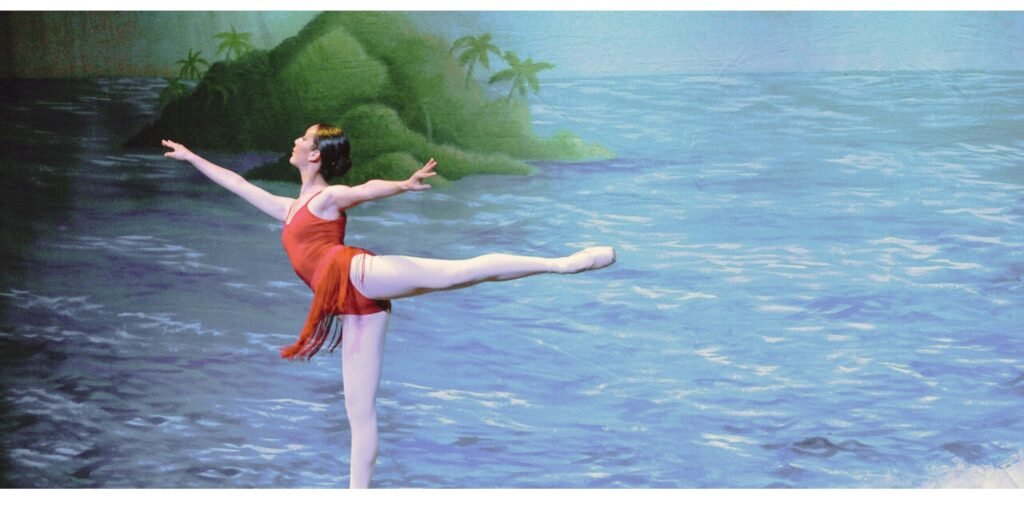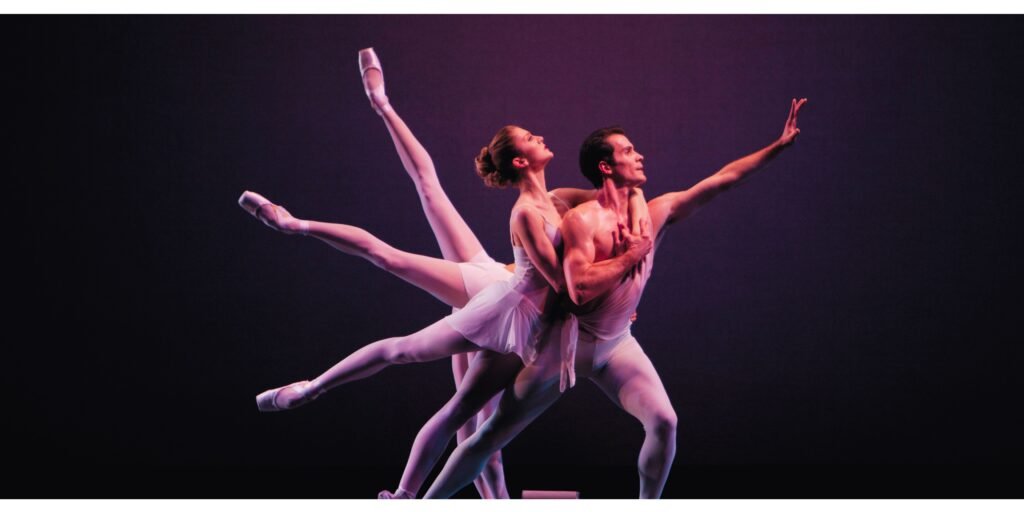Introduction
Ballet, often regarded as a graceful and captivating form of dance, Is Ballet A Sport Or An Art has long been a subject of debate in terms of its classification. Is it a sport, or is it an art? In this 2000-word article, we will delve into the intricacies of ballet, exploring its physical demands, artistic expressions, and the blurred lines that exist between these two categories. Is Ballet A Sport Or An Art Join us on this journey to unravel the true essence of ballet.
Defining Ballet
Is Ballet A Sport Or An Art
Ballet is a classical dance form that originated in the Italian Renaissance Is Ballet A Sport Or An Art courts during the 15th century. It is characterized by precise and highly formalized movements, graceful gestures, and intricate footwork.
Physical Demands
Ballet dancers undergo rigorous training and conditioning to develop the strength, flexibility, and endurance required for their performances. These physical demands are often associated with sports.
Injury Rates
Ballet is notorious for its high injury rates, which are comparable to those of many sports. The constant strain on the body and the pursuit of perfection can lead to injuries.
The Artistic Expression in Ballet
Storytelling Through Dance
One of the key aspects of ballet is its ability to convey stories and emotions through movements. Dancers use their bodies in Is Ballet A Sport Or An Art to express narratives and evoke feelings, highlighting their artistic nature.
Choreography and Music
Ballet relies heavily on choreography and music to create a harmonious blend of visual and auditory art forms. The intricate coordination between dancers and musicians is a testament to its artistic depth.
The Competitive Aspect
Ballet Competitions
In recent years, ballet competitions have gained popularity, introducing an element of competition similar to sports. Dancers compete for awards, showcasing their technical prowess and artistry.
Judging Criteria
Judging in ballet competitions Is Ballet A Sport Or An Art involves evaluating both technical skills and artistic interpretation, blurring the lines between the two classifications.
The Gray Area
Fusion of Sport and Art
Ballet exists in a unique gray area where athleticism and artistry coexist. Dancers are athletes who use their bodies as instruments to create art, making it challenging to categorize definitively.
Evolution of Ballet
Ballet has evolved over time, with modern interpretations pushing boundaries and redefining traditional norms. This evolution further blurs the line between sport and art.
The Controversy
Perspectives on Ballet
Different individuals and organizations have varying opinions on whether ballet should be considered a sport or an art. Some argue for its recognition as a sport due to its physical demands, while others emphasize its artistic value.
Olympic Recognition
The debate has even extended to Is Ballet A Sport Or An Art discussions about whether ballet should be included in the Olympics as a sport, adding another layer of complexity to the issue.
The Future of Ballet
Innovations in Ballet
Ballet continues to evolve and adapt to contemporary tastes and expectations. Innovations in choreography, costume design, and music integration have kept ballet relevant in the modern era.
Expanding Horizons
Ballet companies are exploring new avenues to reach wider audiences, including live-streamed performances and collaborations with other art forms, such as theater and film. Is Ballet A Sport Or An Art These endeavors emphasize the artistic aspect of ballet.
The Training Regimen
Ballet vs. Athletic Training
Ballet training is often likened to athletic training due to its intensity and discipline. Dancers spend hours perfecting their technique, similar to athletes honing their skills.
Mental Conditioning
In addition to physical demands, ballet places a significant emphasis on mental conditioning. Dancers must maintain focus, control, and emotional depth throughout their performances, akin to the mental fortitude required in sports.
The Role of Judges
Artistic Interpretation
In ballet competitions, judges not only assess technical proficiency but also the dancers’ ability to convey emotions and tell stories. This aspect aligns with the artistic realm.
Scoring Systems
Scoring systems in ballet competitions have evolved to include both objective technical scores and subjective artistic scores, reflecting the dual nature of ballet.
The Power of Interpretation
Diverse Styles
Ballet encompasses various styles, from classical to contemporary. Dancers’ interpretations of these styles can vary widely, highlighting the artistry within ballet.
Personal Expression
Ballet allows for personal expression within the confines of established choreography, enabling each dancer to infuse their unique artistry into their performances.
The Beauty of Fusion
Interdisciplinary Collaborations
Ballet often collaborates with other art forms, such as visual arts, music, and theater. These collaborations showcase ballet’s ability to transcend traditional boundaries.
Cultural Influence
Ballet’s adaptability has allowed it to incorporate elements from diverse cultures, further enriching its artistic palette.
The Final Verdict
A Matter of Perspective
In the end, whether one views ballet as a sport or an art is subjective. It’s a testament to the versatility of this dance form that it can be appreciated from multiple angles.
Celebrating Versatility
Rather than trying to definitively classify ballet, perhaps we should celebrate its versatility, its ability to blur lines, and its capacity to captivate audiences worldwide.
The Global Impact
Cultural Significance
Ballet’s reach extends far beyond the stage. It holds cultural significance in various parts of the world, often representing the pinnacle of artistic achievement.
International Ballet Festivals
International ballet festivals, showcasing the talents of dancers from around the globe, underscore ballet’s role as both an art form and a means of cultural exchange.
The Evolution of Ballet Attire
Costume Design
Ballet costumes have evolved over the centuries, with designers constantly pushing the boundaries of creativity. These costumes not only serve functional purposes but also contribute to the visual artistry of ballet.
Tutus and Pointe Shoes
The iconic tutus and pointe shoes worn by ballerinas are symbolic of the artistry within ballet. They enhance the ethereal quality of the dance.
Health and Well-being
Physical Benefits
Participation in ballet can offer numerous health benefits, including improved posture, core strength, and cardiovascular fitness. These physical attributes are often associated with athletes.
Mental Well-being
Ballet’s emphasis on discipline, focus, and self-expression can contribute to improved mental well-being, akin to the psychological benefits derived from sports.
The Role of Ballet Schools
Nurturing Talent
Ballet schools play a crucial role in nurturing young talent and shaping the future of ballet. They provide a structured environment where aspiring dancers can develop their skills.
Holistic Education
Ballet schools often emphasize a well-rounded education that encompasses not only dance technique but also academic and artistic studies, reinforcing its dual nature.

Ballet in Popular Culture
Popularity in Media
Ballet has found its way into popular culture through movies, television shows, and commercials. These representations often highlight its artistic and athletic aspects.
Inspirational Stories
Countless inspirational stories of ballet dancers overcoming adversity and pursuing their dreams have been featured in media, emphasizing the human spirit within ballet.
The Ongoing Debate
Advocating for Recognition
Advocates for ballet as a sport argue that acknowledging its physical demands could lead to increased funding and support for dancers’ well-being and development.
Preserving Artistry
On the other hand, proponents of ballet as an art form stress the importance of preserving its artistic integrity and not reducing it solely to a sport.
A Harmonious Coexistence
Embracing Both Perspectives
Perhaps the most fitting conclusion to the debate is that ballet is a harmonious coexistence of sport and art. It defies the need for a rigid classification, allowing individuals to appreciate it on their terms.
Personal Connection
Ultimately, what matters most is the personal connection one forms with ballet, whether through the sheer athleticism of its dancers or the emotional resonance of its performances.
In summary, ballet remains a source of endless fascination, transcending the boundaries of sports and art. Its enduring appeal lies in its ability to evoke wonder, inspire creativity, and ignite the passions of both performers and spectators alike.
The Legacy of Ballet
Historical Significance
Ballet has left an indelible mark on the world of performing arts. Its historical significance is reflected in its enduring presence on stages worldwide.
Cultural Preservation
Ballet often serves as a means of preserving cultural traditions and stories, further emphasizing its role as an art form.
The Versatility of Dancers
Career Transitions
Ballet dancers often find success in diverse career paths beyond the stage. Some become choreographers, teachers, or even actors, showcasing the adaptability of their skills.
Influential Role Models
Prominent ballet dancers serve as role models, inspiring future generations to explore their artistic and athletic potentials simultaneously.
Education and Outreach
Ballet Outreach Programs
Many ballet companies engage in outreach programs, introducing ballet to underserved communities. These programs aim to make ballet accessible to a broader audience.
Educational Initiatives
Ballet schools and institutions offer educational initiatives that encompass not only dance but also academic and artistic education, fostering a holistic approach to the art form.
The Intersection of Art and Science
Biomechanics of Ballet
Ballet has drawn the attention of scientists who study the biomechanics of dance movements. This interdisciplinary approach sheds light on both its athletic and artistic aspects.
Physiological Demands
Understanding the physiological demands of ballet contributes to injury prevention and the optimization of dancers’ training regimens.
Ballet in the Digital Age
Online Presence
Ballet companies and dancers have embraced the digital age, using social media and streaming platforms to reach a global audience. This digital presence underscores ballet’s adaptability.
Virtual Performances
Especially in times of pandemic-related restrictions, virtual performances have allowed ballet to continue captivating audiences, reinforcing its status as an art form.
The Future of Ballet
Evolving Narratives
As the world evolves, ballet continues to evolve with it. New narratives, choreography styles, and interpretations ensure its relevance in the ever-changing landscape of the arts.
Inclusivity and Diversity
Ballet companies are increasingly committed to inclusivity and diversity, reflecting the evolving values of society and the desire to make ballet accessible to all.
The Unifying Power of Ballet
A Universal Language
Ballet transcends language barriers and cultural differences, uniting people from diverse backgrounds through the universal language of movement and emotion.
An Enduring Passion
Whether as performers or spectators, those touched by ballet often develop a lifelong passion for this art form, testifying to its profound impact.
In summary, ballet’s legacy as both an art form and a sport continues to flourish. It’s a testament to human creativity and dedication, a celebration of physical prowess, and a source of boundless inspiration for generations to come.
Ballet as a Cultural Ambassador
International Diplomacy
Ballet often serves as a cultural ambassador, with ballet companies and dancers representing their nations on the global stage. These performances strengthen cultural ties and foster international goodwill.
Touring Productions
Ballet companies frequently embark on international tours, sharing their artistry with diverse audiences and promoting cross-cultural understanding.
The Ballet Community
Support Networks
The ballet community is a tightly-knit network of artists, teachers, choreographers, and enthusiasts. This sense of community fosters collaboration, mentorship, and artistic growth.
Ballet Families
Ballet companies often become extended families for their members, as dancers forge deep bonds through shared experiences, rehearsals, and performances.
The Inspirational Power of Ballet
Overcoming Adversity
Many ballet dancers have overcome physical challenges and societal stereotypes to excel in their craft. Their stories inspire others to pursue their passions relentlessly.
Empowering Women
Ballet has empowered women both on and off the stage, breaking gender barriers and demonstrating the strength and grace of female dancers.
Ballet and Education
Academic Integration
Some educational institutions have integrated ballet into their curricula, recognizing its value in promoting discipline, creativity, and physical fitness among students.
Career Pathways
Ballet education opens doors to diverse career pathways, including dance therapy, arts administration, and dance education, broadening the horizons for aspiring artists.
Ballet’s Environmental Impact
Sustainability Initiatives
Ballet companies are increasingly adopting eco-friendly practices, from sustainable set designs to reducing carbon footprints during tours, aligning with contemporary environmental values.
Ballet’s Reflection of Nature
Ballet often draws inspiration from nature, with choreography and narratives reflecting the beauty and fragility of the natural world.
Ballet in the Healthcare Sector
Dance as Therapy
Ballet and dance are increasingly recognized for their therapeutic benefits, aiding in physical rehabilitation and improving mental well-being.
Dance for All Ages
Dance programs for seniors and individuals with disabilities highlight the inclusivity and adaptability of ballet as an art form.
The Enduring Magic of Ballet
A Source of Wonder
Ballet’s ability to transport audiences to other worlds, evoke emotions, and ignite the imagination remains its enduring magic.
Passing the Torch
Ballet’s legacy continues as new generations of dancers and choreographers carry forward its traditions while pushing the boundaries of innovation.
The Role of Technology in Ballet
Digital Rehearsals
Technology has transformed the way ballet is rehearsed, allowing dancers and choreographers to collaborate virtually, bridging geographical gaps, and enhancing efficiency.

Costume and Set Design
Advancements in computer-aided design have revolutionized costume and set creation, enabling designers to visualize and refine their concepts with precision.
Ballet as a Bridge Between Generations
Passing Down Traditions
Ballet is a living tradition passed down through generations. Seasoned dancers share their knowledge and experiences with younger generations, ensuring the preservation of technique and artistry.
Inter-Generational Collaborations
Collaborations between seasoned ballet stars and emerging talents breathe new life into classical and contemporary ballet, creating a dynamic fusion of styles.
Ballet and Social Change
Advocating for Inclusivity
Ballet organizations are increasingly committed to fostering inclusivity by diversifying their casts, choreographers, and audiences, reflecting the evolving values of society.
Addressing Social Issues
Ballet productions are exploring social and political themes, using their artistry to shed light on important issues and provoke meaningful discussions.
Ballet’s Role in Education
Arts Education Programs
Ballet companies often have outreach programs that provide arts education to schools, introducing students to the world of dance and nurturing their creativity.
Scholarships and Training
Scholarships and training programs are essential in identifying and supporting young talent, ensuring that ballet remains accessible and inclusive.
Ballet as a Healing Art
Dance Therapy
Ballet and dance therapy programs are being used to help individuals cope with physical and emotional challenges, harnessing the therapeutic power of movement.
Table of Contents
Healing Performances
Ballet performances have the ability to heal and uplift audiences, offering solace and hope in times of adversity.
The Future of Ballet
Sustainable Practices
Ballet companies are embracing sustainability in their operations, from eco-friendly costumes to reduced carbon emissions, ensuring a more environmentally conscious future.
Technological Integration
The future of ballet may see even deeper integration with technology, from interactive performances to virtual reality experiences, expanding its reach and impact.
Conclusion
In conclusion, the question of whether ballet is a sport or an art is not easily answered. Ballet embodies elements of both categories, showcasing the incredible athleticism of its dancers while also expressing profound artistic beauty. It is a testament to the versatility of human expression. Ultimately, whether one classifies ballet as a sport or an art may depend on their perspective and appreciation for this mesmerizing form of dance.
FAQ
- Can ballet dancers participate in sports competitions?
Ballet dancers can certainly participate in sports competitions, but their training and focus are primarily on ballet. Some may engage in other physical activities for cross-training. - Are there professional ballet leagues like in sports?
While there are no professional ballet leagues in the traditional sense, there are numerous ballet companies and theaters worldwide where dancers perform as part of a company. - Is ballet more physically demanding than some sports?
Ballet can be exceptionally physically demanding, with dancers requiring strength, flexibility, and stamina. It can be on par with the physical demands of certain sports. - How do ballet dancers balance athleticism and artistry?
Ballet dancers strike a delicate balance between athleticism and artistry through years of training and practice. They use their physical abilities to convey artistic expressions. - Is there a future for ballet in sports competitions like the Olympics?
The inclusion of ballet in sports competitions like the Olympics is a matter of ongoing debate. While it hasn’t happened yet, the idea is not entirely off the table, given the unique qualities of ballet.
 Cric Enjoy Sports News, Cricket Update, Live Streaming
Cric Enjoy Sports News, Cricket Update, Live Streaming







